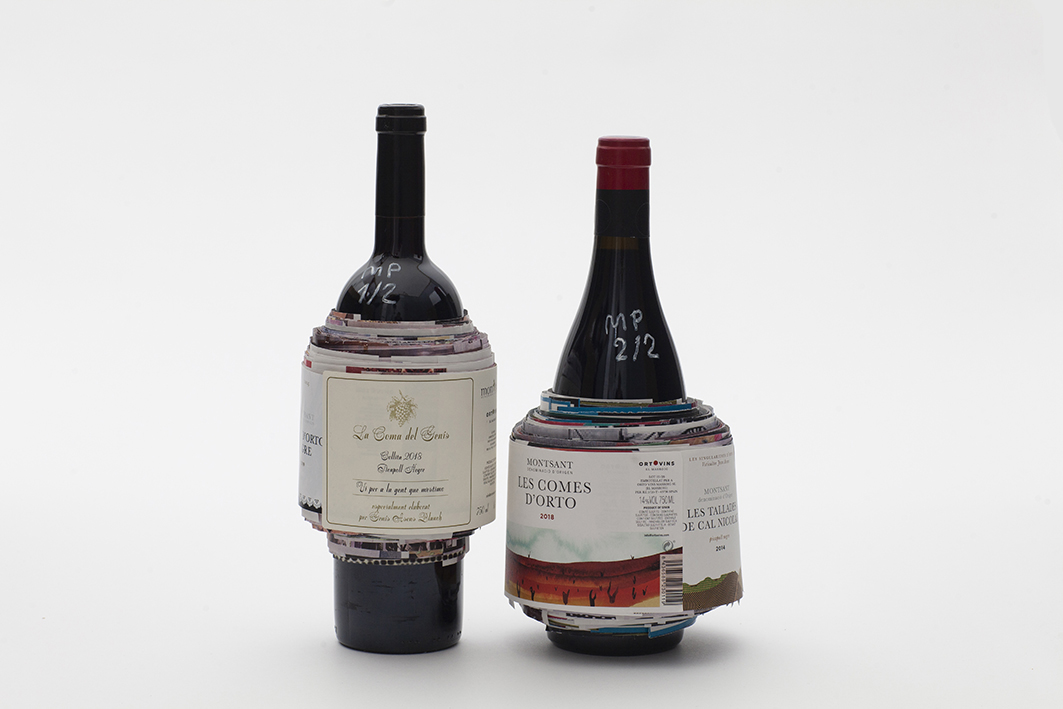Radical Coupage Theory Vins is not made using winemaking techniques, oenological parameters or gastronomical or sommelier-led criteria. It is the result of a speculative project concerned with concepts such as cooperation and common goals.
Radical Coupage Theory Vins is metaterritorial, and it is neither scientific nor legal. The result is a piece of art that takes the form of wine in a bottle. Any step of the process that also takes the form of a bottle of wine is valid as a piece of art, is it is part of a chain of actions that are necessary to create the final product.
Radical Coupage Theory Vins is focused on Montsant-Priorat, two denominations of origin within the Priorat region. Priorat is home to a large number of wineries and wine producers, some of which are internationally recognized.
The project consists of creating wines from other wines.
We take the wines of a given winery (for example, Orto Vins from Montsant) and mix them together to create a new, blended wine. Orto Vins, if we leave aside the sweet wines and rosés, has eleven varieties. So we get eleven bottles that have been refilled with the mixture, each with all eleven labels pasted on. The flavour of each type of grape disappears into the blend to create a taste that is more associated with brand values, production and the territory in which Orto Vins operates.
We repeat this process with each of the bodegas in Montsant.
Once the wines have been combined and a “coupage” obtained from each winery, we will have many bottles containing mixtures of each of the wines, each with all the labels layered up.
Afterwards we will choose one bottle from each winery, for a total of 56, and mix them with each other to obtain 56 bottles containing all the wines produced in Montsant – each, of course, with all the labels.
We will follow the same process for the Priorat region, which has 111 wine producers.
In the end, we will have 56 bottles of Montsant coupage, and 111 bottles of Priorat coupage. We will take a random bottle of the Montsant and another of Priorat (they are all the same) and make a further coupage between them.
We will then have two bottles containing all the wines from the Montsant-Priorat regions, each with all of the labels on them.
Montsant-Priorat 1/2 and Montsant Priorat 2/2 are the end result of the Radical Coupage Theory Vins, which combines oenology, anthropology and politics.
Martí Guixé
July 2021
N=1. RADICAL COUPAGE THEORY VINS is a project by Martí Guixé, with the collaboration of the oenologist Joan Asens, for Terra, Teca, Traca, a dialogue between artists, scientists, producers and other actors related to the rural world and food. The proposal was carried out during seven artistic residencies in Catalonia, including Addend [la Morera de Montsant], for the larger project Barcelona, the World Capital of Sustainable Food 2021
.
MP 1/2, MP 2/2. Piece
Photo Inga Knölke 2021
